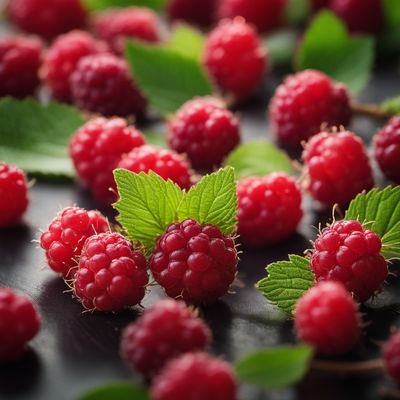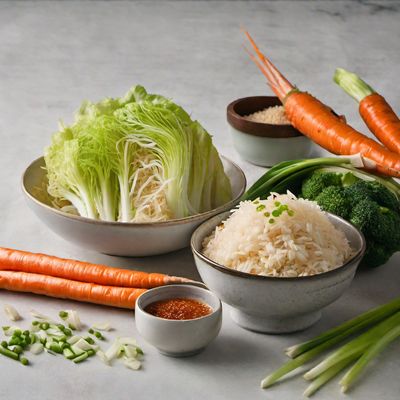
Ingredient
Korean raspberries
The Tangy Gems
Korean raspberries are small, bright red berries with a sweet and tangy flavor. They have a juicy texture and are slightly less tart compared to other raspberry varieties. These berries are often enjoyed fresh, but they can also be used in jams, desserts, salads, and even savory dishes to add a refreshing twist.
Origins and history
Korean raspberries are primarily cultivated in South Korea, where they are known for their exceptional quality and flavor. The country's favorable climate and fertile soil contribute to the berries' vibrant color and taste. Korean raspberries have gained popularity in recent years and are now exported to various countries around the world.
Nutritional information
Korean raspberries are low in calories and a good source of dietary fiber, vitamin C, and antioxidants. They provide a burst of flavor and a nutritional boost to any dish. A 1-cup (123g) serving of Korean raspberries contains approximately 65 calories.
How to select
When selecting Korean raspberries, look for berries that are plump, firm, and brightly colored. Avoid berries that are mushy or have signs of mold. The berries should have a sweet aroma and be free from any unpleasant odors. If possible, taste a berry to ensure it meets your desired level of sweetness and tanginess.
Storage recommendations
To keep Korean raspberries fresh, store them in the refrigerator in a breathable container or a paper towel-lined tray. Avoid washing the berries until just before use to prevent them from becoming mushy. Use the berries within a few days of purchase for the best flavor and texture.
How to produce
Korean raspberries can be grown in home gardens or containers, provided they receive adequate sunlight and well-drained soil. They require regular watering and pruning to maintain healthy growth. If you are interested in growing Korean raspberries, consult local gardening resources or seek advice from experienced gardeners in your area.
Preparation tips
Korean raspberries can be enjoyed fresh as a snack or added to various dishes. They are commonly used in desserts such as pies, tarts, cakes, and ice creams. They can also be incorporated into salads, smoothies, and cocktails for a refreshing twist. In savory dishes, Korean raspberries can be used in sauces, marinades, or glazes to add a tangy and fruity element.
Substitutions
Other raspberry varieties
Culinary uses
Korean raspberries are commonly used in Korean cuisine, particularly in desserts and traditional teas. They are also popular in modern recipes that incorporate Korean flavors. In addition, they are widely enjoyed in various international cuisines for their vibrant color and tangy taste.
Availability
South Korea, exported worldwide
More ingredients from this category

Raspberries (red and yellow)
"Nature's Sweet and Tangy Gems: Exploring the Vibrant World of Raspberries"

Black raspberries
Jewels of the Berry World

Korean black raspberries
The Nutty Delights: Pistachios and Their Kin

Nectar raspberries
The Luscious Delight: Exploring the World of Nectar Raspberries

Wineberries
The Jewel of Summer: Wineberries

Arctic brambles
The Arctic Delicacy: Exploring the Unique Flavors of Arctic Brambles
Recipes using Korean raspberries

Bavarian-style Kimchi
Bavarian Sauerkraut with a Korean Twist

Indo-style Kimchi
Spicy and Tangy Indo-Korean Fusion Kimchi

Kimchi
Dutch-inspired Kimchi: A Spicy Twist on Traditional Fermented Cabbage

Korean-Style Chicken Soup
Soothing Samgyetang: Korean Chicken Soup with a Twist

Kimchi Nouvelle
Elevating the Traditional: Kimchi Nouvelle